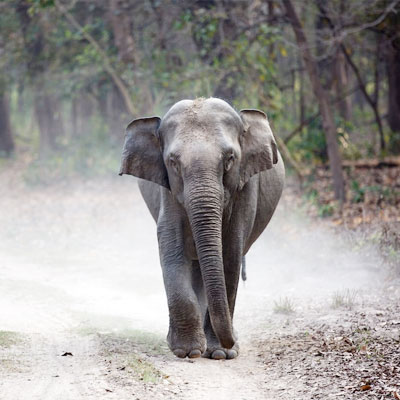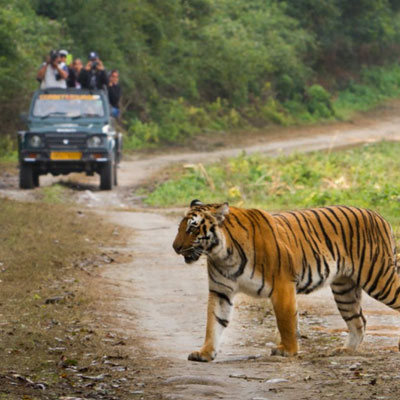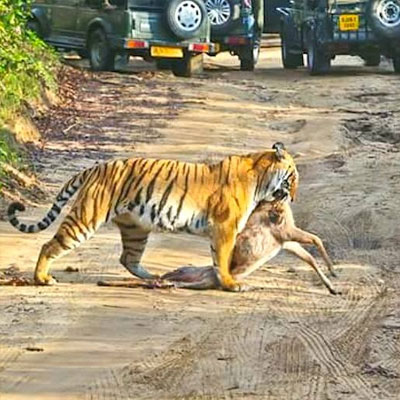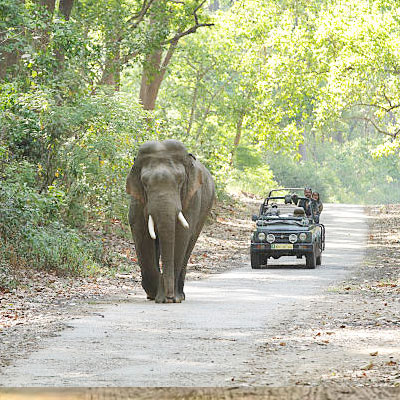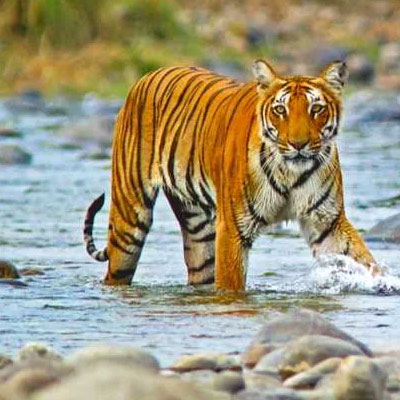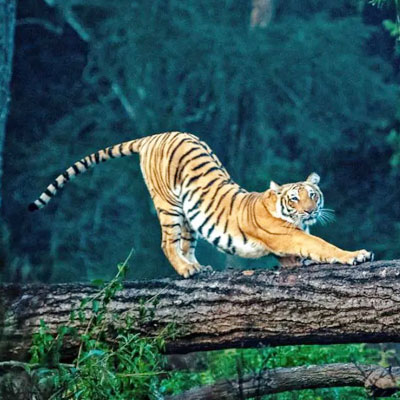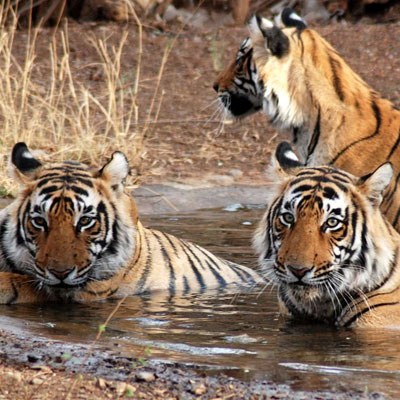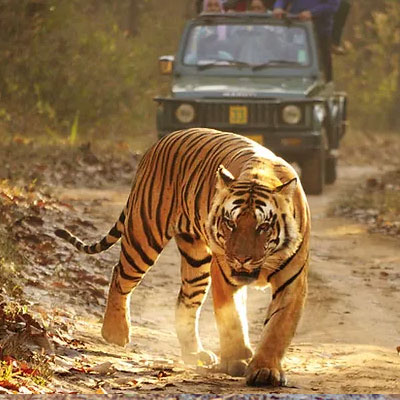
Bijrani Forest Guest House Jim Corbett:-
Bijrani forest rest house is one of the most popular accommodation option for the tourist in the Corbett Tiger reserve. For instance, it has gathered its popularity over many years now due to high chance of Tiger spotting in Bijrani zone where the forest house is situated. There are total 7 rooms at Bijrani FRH (4 double rooms, 2 single rooms and 1 four sharing room) extra bed facility is also available at the accommodation centre. All rooms are having attached bathroom and a sit out area outside the rooms. Hot water facility is also available and electricity here is provided in the evening time as it depends on the solar power. Bijrani Zone in Jim Corbett National Park. It paints a vivid picture of the unique and adventurous experience one can have while exploring this particular area of the park. Bijrani indeed offers a diverse and captivating natural landscape, making it a prime choice for wildlife enthusiasts and nature lovers. The presence of rippling streams, Lantana bushes, and the alluring aroma of Mahua flowers adds to the charm of this region.
The prospect of encountering a Royal Bengal tiger is always an exciting highlight of visiting Jim Corbett, and it’s clear that Bijrani offers an excellent chance for such an encounter. The mention of Sloth bears and their interaction with Mahua flowers adds another layer of intrigue to the wildlife experience in this zone.
Visitors to Jim Corbett National Park, especially those with a passion for wildlife and adventure, will find Bijrani to be an enticing destination worth exploring for its unique topography and the potential for unforgettable wildlife encounters.
Flora & Fauna in Jim Corbett Bijrani Zone:-
Bijrani is a place that offers tourists exemplary diversification in wildlife such as tigers, Wild Dogs, Jackals, Sloth bears, Barking Deer, Indian Python, Leopard, King Cobra, and elephants including an array of reptiles and of course, some rare species of birds.. Jim Corbett National Park, located in the state of Uttarakhand, India, is renowned for its rich biodiversity, diverse flora, and a wide variety of fauna. Here’s an overview of the flora and fauna found in Jim Corbett National Park:
Flora:
Sal Forests: The park is predominantly covered by Sal (Shorea robusta) forests, which dominate the landscape and provide habitat for a range of wildlife species.
Mixed Deciduous Forests: Apart from Sal, the park features mixed deciduous forests with tree species like dhak, semal, khair, sain, and rohini.
Riverine Vegetation: The park is crisscrossed by several rivers and streams, and the riverbanks are adorned with lush riverine vegetation, including elephant grass, bamboo, and various aquatic plants.
Grasslands: Open grasslands and savannahs are scattered throughout the park, offering excellent grazing grounds for herbivores and a habitat for smaller wildlife species.
Flowering Plants: Jim Corbett is home to a variety of flowering plants, including the fragrant Mahua trees, which bloom in the spring and attract wildlife, especially Sloth bears.
Fauna:
Bengal Tiger: Jim Corbett National Park is famous for its population of Royal Bengal Tigers. It’s one of the best places in India to spot these majestic big cats.
Asian Elephant: The park is home to a significant population of Asian elephants, and sightings of these gentle giants are common.
Leopard: Leopards are another apex predator in the park and are often seen prowling the forests.
Indian Sloth Bear: The park is known for its Sloth bear population, and sightings of these creatures, often near Mahua trees, are a unique experience.
Himalayan Black Bear: These bears inhabit the higher altitudes of the park and are occasionally seen.
Indian Wild Dog (Dhole): Jim Corbett is one of the few places where you can spot the highly social and elusive dholes.
Various Deer Species: Deer species include Spotted Deer (Chital), Sambhar, Hog Deer, and Barking Deer (Muntjac).
Wild Boar: These omnivorous animals are commonly seen foraging in the park.
Gharial and Mugger Crocodile: The rivers within the park are home to these reptiles, especially the critically endangered Gharial.
Birdlife: Jim Corbett National Park boasts over 600 species of birds, including both resident and migratory birds. Common sightings include the Great Hornbill, Crested Serpent Eagle, and various waterfowl.
Reptiles: Apart from crocodiles, the park is home to several species of snakes, including the Indian Python, King Cobra, and various vipers.
Butterflies and Insects: The park’s diverse flora supports a rich insect population, including numerous butterfly species.
Jim Corbett National Park offers a unique opportunity to witness the incredible biodiversity of India in its natural habitat. The mix of dense forests, riverine ecosystems, and grasslands creates a perfect environment for a wide range of plant and animal species.

